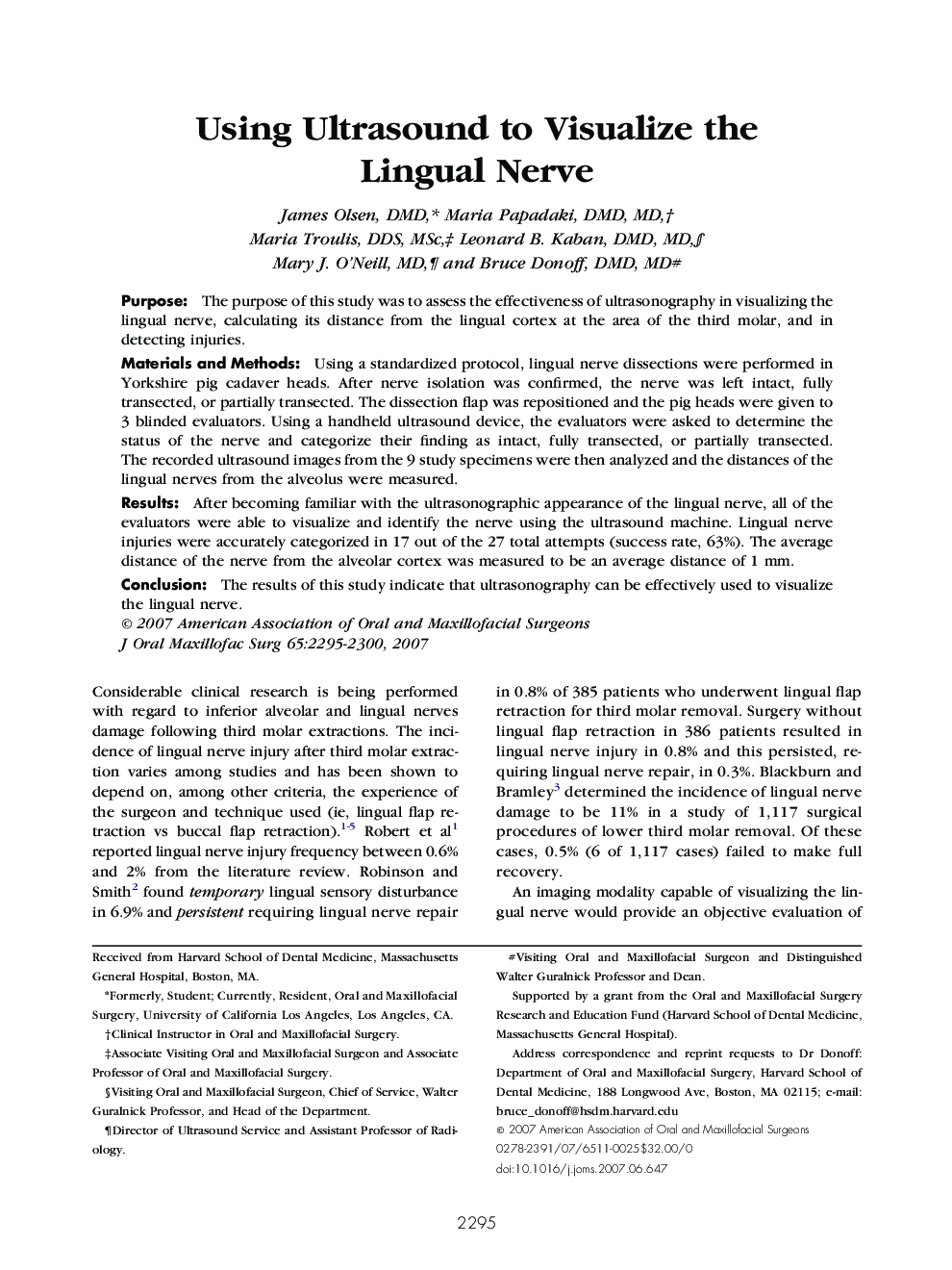| Article ID | Journal | Published Year | Pages | File Type |
|---|---|---|---|---|
| 3158691 | Journal of Oral and Maxillofacial Surgery | 2007 | 6 Pages |
PurposeThe purpose of this study was to assess the effectiveness of ultrasonography in visualizing the lingual nerve, calculating its distance from the lingual cortex at the area of the third molar, and in detecting injuries.Materials and MethodsUsing a standardized protocol, lingual nerve dissections were performed in Yorkshire pig cadaver heads. After nerve isolation was confirmed, the nerve was left intact, fully transected, or partially transected. The dissection flap was repositioned and the pig heads were given to 3 blinded evaluators. Using a handheld ultrasound device, the evaluators were asked to determine the status of the nerve and categorize their finding as intact, fully transected, or partially transected. The recorded ultrasound images from the 9 study specimens were then analyzed and the distances of the lingual nerves from the alveolus were measured.ResultsAfter becoming familiar with the ultrasonographic appearance of the lingual nerve, all of the evaluators were able to visualize and identify the nerve using the ultrasound machine. Lingual nerve injuries were accurately categorized in 17 out of the 27 total attempts (success rate, 63%). The average distance of the nerve from the alveolar cortex was measured to be an average distance of 1 mm.ConclusionThe results of this study indicate that ultrasonography can be effectively used to visualize the lingual nerve.
